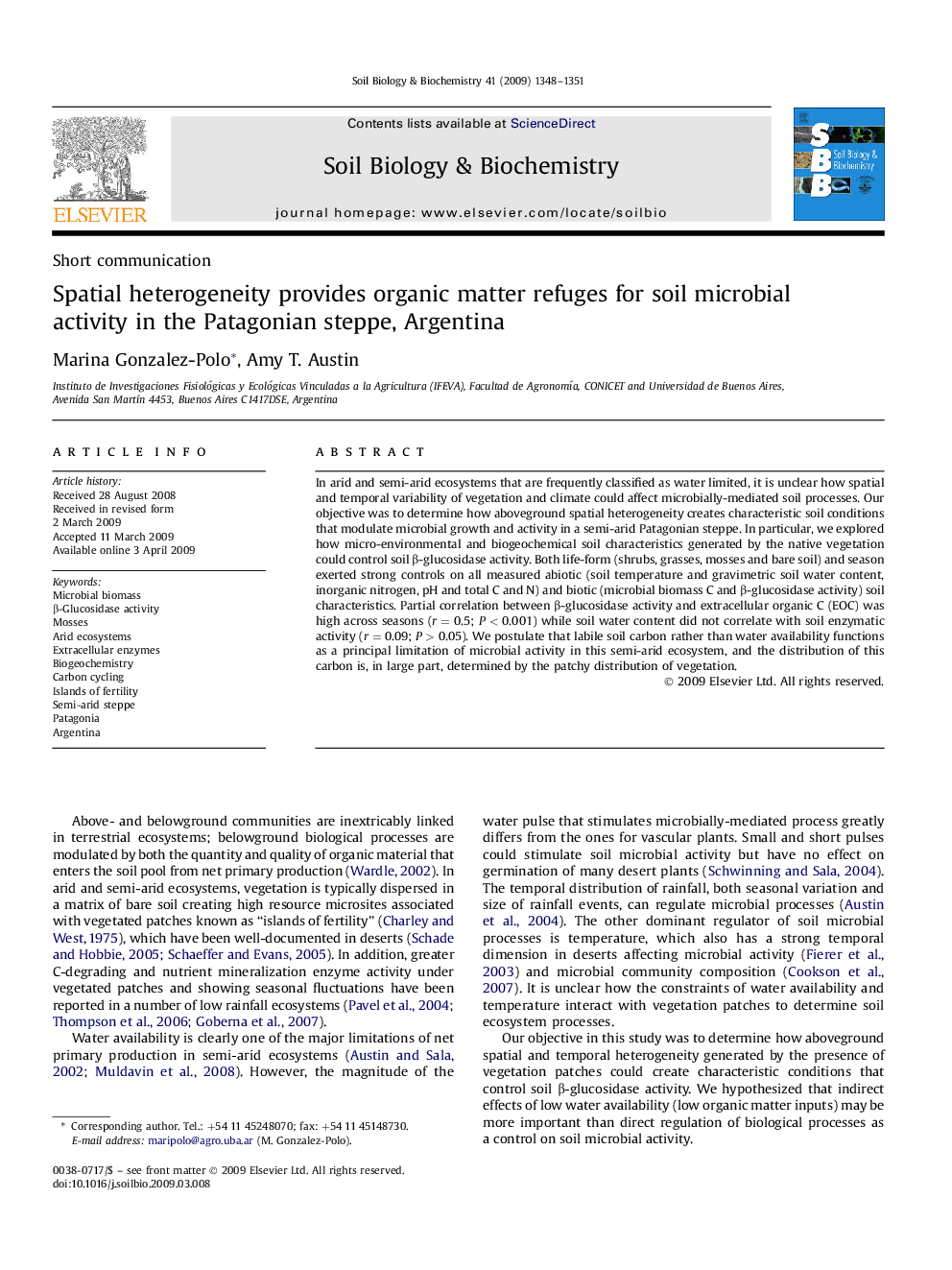| Article ID | Journal | Published Year | Pages | File Type |
|---|---|---|---|---|
| 2025642 | Soil Biology and Biochemistry | 2009 | 4 Pages |
In arid and semi-arid ecosystems that are frequently classified as water limited, it is unclear how spatial and temporal variability of vegetation and climate could affect microbially-mediated soil processes. Our objective was to determine how aboveground spatial heterogeneity creates characteristic soil conditions that modulate microbial growth and activity in a semi-arid Patagonian steppe. In particular, we explored how micro-environmental and biogeochemical soil characteristics generated by the native vegetation could control soil β-glucosidase activity. Both life-form (shrubs, grasses, mosses and bare soil) and season exerted strong controls on all measured abiotic (soil temperature and gravimetric soil water content, inorganic nitrogen, pH and total C and N) and biotic (microbial biomass C and β-glucosidase activity) soil characteristics. Partial correlation between β-glucosidase activity and extracellular organic C (EOC) was high across seasons (r = 0.5; P < 0.001) while soil water content did not correlate with soil enzymatic activity (r = 0.09; P > 0.05). We postulate that labile soil carbon rather than water availability functions as a principal limitation of microbial activity in this semi-arid ecosystem, and the distribution of this carbon is, in large part, determined by the patchy distribution of vegetation.
